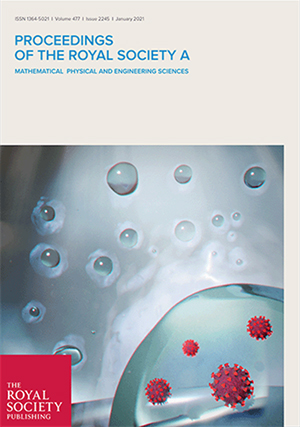COVID-19 News on Airborne transmission
The role of a combined approach consisting of face masks, social distancing, and adequate ventilation in order to mitigate the spread of COVID-19 has been assessed in the research of College Research Associate Dr Pedro Magalhães de Oliveira (2015), who has found that prolonged talking can be as severe as coughing in the transmission of the virus.
 The paper he co-authored with colleagues from Cambridge’s Department of Engineering and Imperial College London, recently published in the journal Proceedings of the Royal Society A, shows that social distancing measures alone do not provide adequate protection from the virus. It shows, for instance, that large and small droplets emitted in an unprotected cough by an infectious person can reach beyond 2 metres in just a matter of a couple of seconds, in enough quantities to cause the disease if inhaled by a healthy person. While smaller droplets are emitted during speaking, they still may carry a considerable amount of virus, travelling the same distance at around 5-10 seconds.
The paper he co-authored with colleagues from Cambridge’s Department of Engineering and Imperial College London, recently published in the journal Proceedings of the Royal Society A, shows that social distancing measures alone do not provide adequate protection from the virus. It shows, for instance, that large and small droplets emitted in an unprotected cough by an infectious person can reach beyond 2 metres in just a matter of a couple of seconds, in enough quantities to cause the disease if inhaled by a healthy person. While smaller droplets are emitted during speaking, they still may carry a considerable amount of virus, travelling the same distance at around 5-10 seconds.
“With colleagues in Professor Mastorakos’ research group, we have been working hard since the pandemic hit the UK to shed light on the debate of `aerosol versus droplet transmission,’” says Dr de Oliveira, the paper’s first author. “The work was first released as an online preprint in July. We used various well-established mathematical models and experimental measurements from a range of different fields, as well as new information on the SARS-CoV-2 virus, to model how respiratory droplets evaporate and settle following a cough or while speaking. With these results, we showed through simple, canonical fluid mechanics problems, that airborne transmission may occur under different scenarios. First, we demonstrate the quick spread of large and small droplets over several metres, which can happen both indoors and outdoors. Then, we show how the small droplets emitted, or aerosol, can be suspended in air for up to an hour, accumulating in indoor spaces if ventilation is not adequate.”
To address the problem of ventilation in indoors spaces, the authors developed Airborne.cam. In the app, the user can set the conditions of a given indoors space, such as size, ventilation, occupancy and type of activity, which are then used to calculate the risk of infection for a healthy individual exposed to the infectious viral particles in the air. With the app, users can understand which practices can mitigate viral transmission, focusing on the relative reduction of risk of infection of a particular indoors space with, for example, the use of different types of masks.
The app has been used by the University Safety Office SafeSpace team, which have been advising departments on how best to implement control measures to ensure minimum risk of transmission. “Pedro and his colleagues demonstrated the Airborne tool and it was decided that this would be a valuable step in all future ventilation risk assessments,” says the Safety Advisor Alison Gower. “The app was incorporated into the university’s new ventilation guidance and, as of the start of Lent term, it is a requirement for all departments to use Airborne.cam on any higher risk spaces.”
The authors have released their tool to the public hoping it can be used by those managing public spaces, such as shops, offices and classrooms, in addition to the control measures issued by the government. The tool can also help people in general to use fluid mechanics to make better choices, and adapt their day-to-day activities and surroundings in order to suppress risk, both for themselves and for others. “We continue to evaluate the problem through high-fidelity simulations to understand the role of air streams and turbulence, and how these affect which droplets settle by gravity and which remain afloat in the air,” says Dr de Oliveira. The authors continue the development of Airborne.cam, hoping to include new models to evaluate, for example, the problem of short-range transmission which is particularly important in small or crowded indoor spaces.
Reference:
P. M. de Oliveira et al. ‘Evolution of spray and aerosol from respiratory releases: theoretical estimates for insight on viral transmission.’ Proceedings of the Royal Society A (2021). DOI: 10.1098/rspa.2020.0584
